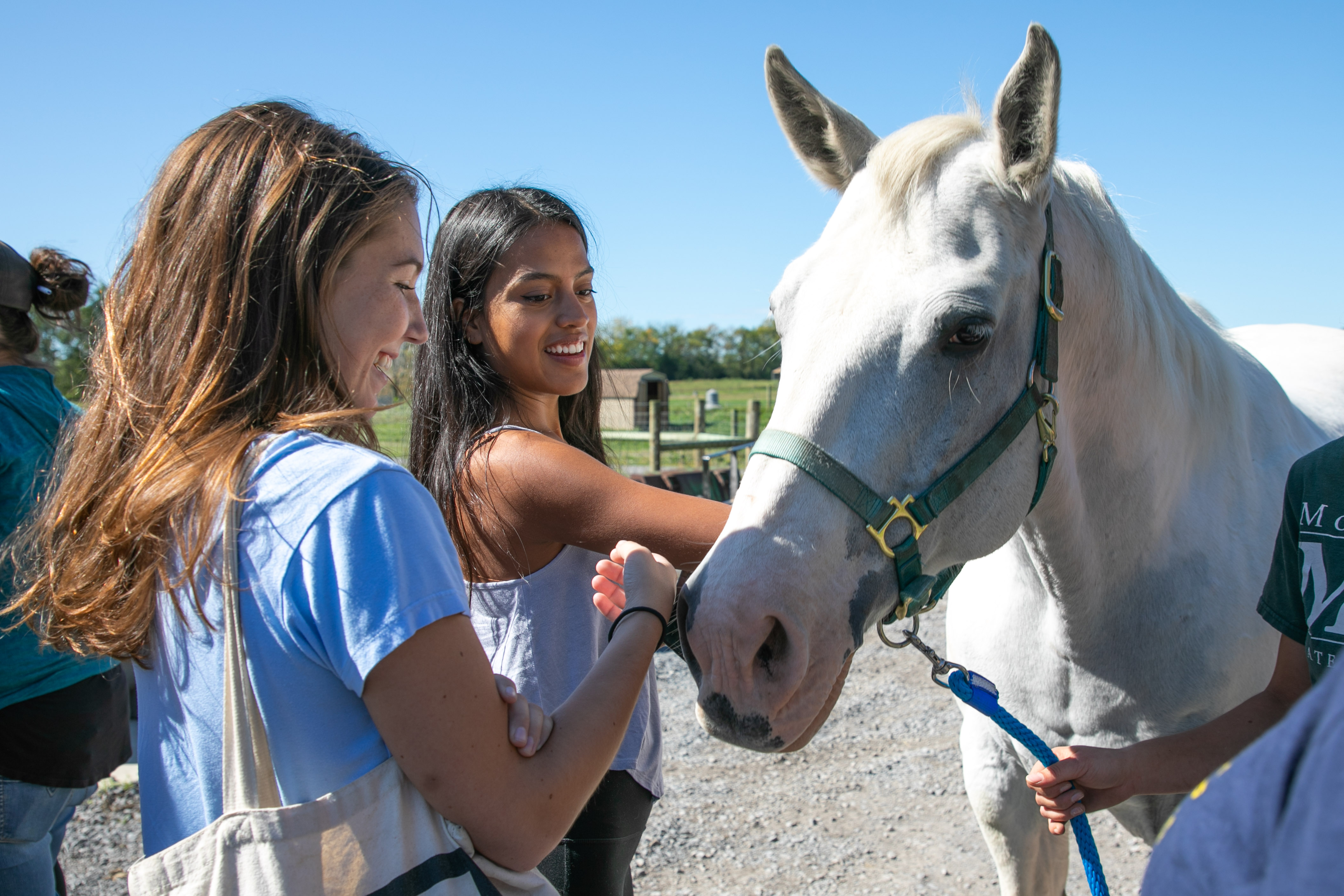Dining Services integrates sustainability in many aspects from procurement to management of leftover food. More than 60 percent of all items sold and served on campus are grown, raised, processed, or wholly manufactured within New York State, including the shelled eggs and various meats from Autumn’s Harvest Farm. Located in Romulus, New York, Autumn’s Harvest Farm is less than 65 miles away from the University. Reducing the distance between harvest and table decreases the University’s carbon footprint and increases freshness.
Autumn’s Harvest Farm’s mission is “…to farm in a way that has a positive impact on the environment while raising our animals with the highest animal welfare standards. We want to provide our consumers with a healthy product, raised in a way they can [feel] good about.” The cattle and chickens are some examples of the farm’s progressive practices.
The over-farmed and over-grazed land on the farm prompted owners Tim and Sarah Haws to acquire some of the top Grass-fed Murray Grey bulls in Australia. The Murray Greys (pictured below) prove to be efficient, gentle animals, which thrive on pasture and grow fat on grass which meets the farm’s goals to provide choice grade meal raised on a grass-fed diet. As feed efficient animals, the cattle gain more on less food. Their ability to produce a high-quality yield and withstand extreme temperatures adds to their main accomplishment of reviving the once overused ecosystem into a vibrant one.

The farm’s animal welfare and environmental priorities are exemplified by the chicken houses (pictured below) on wheels which allow egg-laying chickens to access the outdoors and shelter 24 hours a day. Solar lights give the chickens better visibility throughout winters with early sunsets and a solar water system provides a constant flow of fresh water. Rainwater is drained into gutters that run to a barrel and then automatic waterers. The chicken houses are rolled onto areas the beef cattle have grazed on, allowing the chickens to follow a natural cycle of picking through manure, eating bugs, and spreading manure without human intervention.

In addition to purchasing from this local farm, the University strives to be more conscientious about the meat cuts they purchase. Instead of only purchasing common meat cuts, chefs are encouraged to be creative with their cooking and see how they can make less popular animal cuts tasty. This helps optimize the percentage of each animal purchased and reduce waste.
Autumn’s Harvest has other numerous sustainable practices including solar powered electric wire-fencing that are used to divide the land and redirect unwanted predators. Goats were purchased in 2018 to control weeds, vines, and invasive species that other animals pass by. The farm hopes to use horses to help the farm workers travel around the farm instead of instead of using gas powered vehicles.
In addition to partnering with local vendors like Autumn’s Harvest, Dining Services has implemented various initiatives to increase healthy and sustainable living. Some include a plant-based approach to menus, pre-consumer and post-consumer composting, and a reusable mug program at coffee shops.
Written by Emily Su, Class of 2022
Photo Credits: Elissa Moy and Emily

